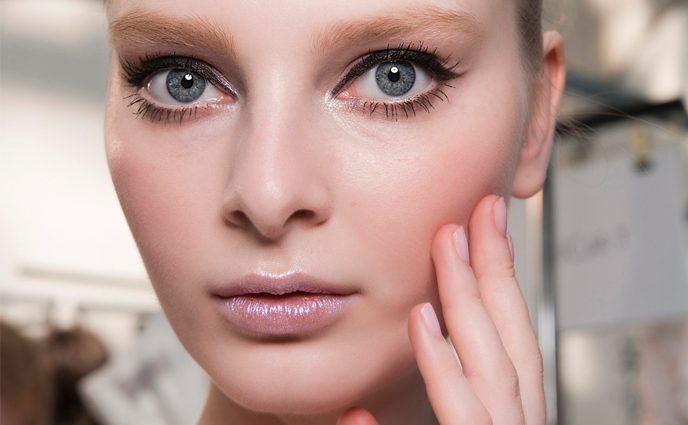In addition to preventing the development of skin cancer, wearing sunscreen every day helps keep your skin looking youthful for longer. The sun's UVA rays are notorious for breaking down collagen and elastin, causing brown spots, thinning the skin, and expediting wrinkle formation. Sun-exposure also dehydrates the skin of natural oils, making it appear temporarily flaky and aged.
A broad-spectrum SPF 30+ sunscreen should be applied every morning to any exposed area of the skin, then reapplied every two hours if you're outdoors and every four hours in you're inside. Allocate a shot-glass worth of sunscreen to your body and a blueberry sized dollop for your face.
In addition, you want to make sure you're applying SPF before you're actually outside.
"It takes at least 10 minutes for the sunscreen to soak into the skin and provide adequate coverage that will match the listed SPF. If you are not protected during those 10 minutes, you can get a really quick burn in sunny zones," notes Dr. Ava Shamban, a board-certified dermatologist based in Beverly Hills. "Also, it's quite common to neglect areas that get sun exposure. For example, we often forget to apply to the back of the neck, our ears, décolletage, and back of the hands. Your sunscreen won't work if you're just applying it in a two-dimensional application process. Apply to every curve of your body to get the SPF listed on the bottle."
Image via Imaxtree
A broad-spectrum SPF 30+ sunscreen should be applied every morning to any exposed area of the skin, then reapplied every two hours if you're outdoors and every four hours in you're inside. Allocate a shot-glass worth of sunscreen to your body and a blueberry sized dollop for your face.
In addition, you want to make sure you're applying SPF before you're actually outside.
"It takes at least 10 minutes for the sunscreen to soak into the skin and provide adequate coverage that will match the listed SPF. If you are not protected during those 10 minutes, you can get a really quick burn in sunny zones," notes Dr. Ava Shamban, a board-certified dermatologist based in Beverly Hills. "Also, it's quite common to neglect areas that get sun exposure. For example, we often forget to apply to the back of the neck, our ears, décolletage, and back of the hands. Your sunscreen won't work if you're just applying it in a two-dimensional application process. Apply to every curve of your body to get the SPF listed on the bottle."
Image via Imaxtree
"As we speak, the ozone layer — which absorbs the most UV rays in the stratosphere — is depleting, meaning the Earth's natural protection is not enough anymore," says Dr. Frieling. "According to the CDC, skin cancer rates in the U.S. have doubled in the last 20 years, and it can be attributed to change in exposure risk factors. This includes indoor tanning and consistent unprotected overexposure to direct sunlight."
The moral of the story here is that sunscreen shouldn't be lumped into the "optional skincare" category. Consistent application is vital to our health and wellbeing. Though it may not offer instant gratification, over the years you'll thank yourself for being so diligent.
Image via Imaxtree
The moral of the story here is that sunscreen shouldn't be lumped into the "optional skincare" category. Consistent application is vital to our health and wellbeing. Though it may not offer instant gratification, over the years you'll thank yourself for being so diligent.
Image via Imaxtree






